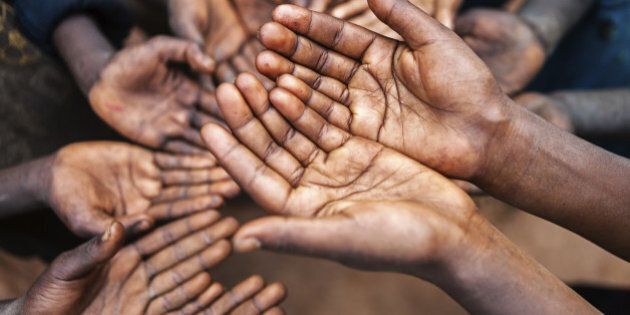
Sub-Saharan Africa is locked in paradox. The sub-region is endowed with tremendous resources, but mired in dire poverty and largely consumed by conflict. This state of being accounts for the fourth element of SSA's paradox. And that is over-reliance on official development assistance. Data from the Organisation for Economic Co-operation and Development indicate that net ODA to SSA was USD$39 billion in 2008, USD$42 billion in 2009, USD$43 billion in 2010, USD$45 billion in 2011, and USD$44 billion in 2012. That is a total of USD$213 billion of aid donations in five years.
By comparison, net ODA to south and central Asia was USD$88 billion in same period. The United States is the largest SSA donor by volume, followed by the United Kingdom, Germany, Japan and France.
Which then begs the question -- where does this money go given the fact that SSA's population remains desperately poor? The short answer is that aid is largely "lost in transition." Donated by political elites of donor nations to fund projects, programs or recipient's budgets, aid funds and programs are executed by two sets of officialdom -- donor and recipient bureaucrats. The same bureaucrats, together with thousands of consultants from mainly donor nations that consume billions of aid dollars, monitor and evaluate themselves. The aid machine keeps running not matter what.
In her provocative and highly original writing, Dead Aid: Why Aid Is Not Working and How There is Another Way for Africa, Dambisa Moyo argued that aid has trapped Africa in a vicious circle of dependency, corruption, market distortion, and grinding poverty. This leaves the continent "with nothing but the 'need' for more aid." For Moyo, Africans do not wish to remain international welfare recepients who rely on handouts. Conventional aid to SSA must stop, says Moyo, and urgently replaced by private investment, or at the very least, supplanted by public investment that becomes catalyst to homegrown and foreign investors. Greater prosperity can only be created private enterprise, and not by governments, which how developed and successful developing nations transformed.
I don't know if President Obama or his senior staffers are aware of Moyo's work. But as per Moyo's advocacy, Obama's new aid model abandons the discredited government-to-government aid modalities. The new model does two crucial things; it introduces the private sector in the aid equation, and elevates to centre stage of socioeconomic transformation, the most important but neglected sector in SSA -- energy infrastructure. Put differently, in the Obama aid model, the primary goal is to foster effective partnerships that connect public and private sector goals and resources for near-term rapid results and long-term impact.
This shift in thinking is well-chosen and timely because electricity in SSA is easily the biggest development challenge. Six-hundred-million people that make up 70 per cent of SSA's population are currently without access to electricity, the vast energy resources on the continent notwithstanding. The International Energy Agency (IEA) reckons that USD$300 billion in private investment is needed to light up SSA homes and industries. However, governance challenges, political uncertainties, corruption, legal and regulatory bottlenecks, and a lack of technical and managerial expertise stand in the way.
After one year of operations, 41 private companies are engaged in Power Africa in six countries, namely, Ethiopia, Ghana, Kenya, Liberia, Nigeria, and Tanzania. And with agencies and countries lining up to supplement the original U.S. catalyst funding of USD$7 billion, including the World Bank's USD$5 billion, African Development Bank's USD$3 billion and USD$1 billion from Sweden, Obama's Power Africa is solidly onto a promising path.
I trust that Moyo has closely followed the Obama aid innovation. And I have no doubt, she is pleased with the concept and execution. I got to know Moyo when her book was launched. She was ridiculed and even abused by multilateral and bilateral aid elites and bureaucrats for her call to end crude versions of aid that trapped Africans into dependency. Moyo discovered the hard way that aid is big business with entrenched interests on the part of those who dispense it. Now, Obama's new model vindicates Dambisa. Great minds do indeed think alike.
Lastly, of the six SSA countries that are engaged in Obama's Power Africa, five are multi-party democracies in which competitive politics is maturing to varying degrees. This is a powerful and welcome message. Development without democracy is built in sand. Obama put it best on his first official visit to Africa on July 11, 2009 , in Ghana:
"we must first recognize a fundamental truth...development depends upon good governance. That is the ingredient which has been missing in far too many places, for far too long. That is the change that can unlock Africa's potential....Make no mistake: history is on the side of these brave Africans, and not with those who use coups or change Constitutions to stay in power. Africa doesn't need strongmen, it needs strong institutions."
All ingredients for success are built into Power Africa -- governments, private enterprise, technologies, democratic governance, and institutions. That is why Power Africa will succeed.